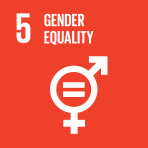Abstract
Despite significant recent improvements in measuring resilience, there are still relevant gaps in the analysis. One of the relatively unexplored aspects of resilience is whether a genderspecific analysis of resilience capacity can become relevant for policy use. This paper contributes to the literature on resilience by analysing a data set with one of the most adopted resilience indicators and highlighting the emerging gaps. There are many reasons why policy makers should be targeting women with their resilience-enhancing activities’. The descriptive analysis, at the individual level, indicates that women — and in particular, older, widowed women — tend to be more likely to live in consumption-poor households. Households with widowed, female heads are more likely to experience food insecurity. Finally, widowed and younger female heads of household, as compared to other female heads, were more likely to suffer persistent shocks and consequent losses. A practical application to the Uganda case study, also, reveals that women’s education appears to play a larger role in mitigating persistent exposure to, and losses from shocks, compared to men’s education. All these reasons suggest that policy makers’ attention should be focused on women. This ultimately translates into the need for better and more gender-specific resilience analysis. In order to move ahead with this, it is necessary to employ better-specified data collection and analysis tools and approaches.
- 04 Mar 2019


